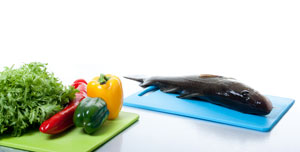 The use of human chorionic gonadotropin (hCG) for weight loss is a controversial topic, with many medical professionals arguing that 500 calories per day is dangerously low. Those who support the use of hCG argue that the hormone, when combined with a low calorie diet, causes the body to break down only non-essential fats, and not muscle or structural fats that cushion organs.
The use of human chorionic gonadotropin (hCG) for weight loss is a controversial topic, with many medical professionals arguing that 500 calories per day is dangerously low. Those who support the use of hCG argue that the hormone, when combined with a low calorie diet, causes the body to break down only non-essential fats, and not muscle or structural fats that cushion organs.
HCG was first used to aid in weight loss by Dr. Albert T. W. Simeons, who also created the first hCG diet protocol. This protocol was outlined in a pamphlet called Pound and Inches: A New Approach to Obesity that was published in 1954. This publication is available widely online and can be downloaded for free. The document still serves as the basis for all hCG diets, although some medical professionals who administer hCG choose to make certain modifications.
In Pound and Inches, Dr. Simeons emphasizes that the make-up of the of the calories consumed while taking hCG is extremely important. The diet consists primarily of vegetables and proteins. There are absolutely no sugars, added fats or processed food permitted on this diet.
For breakfast, patients should only take liquids, such as tea, coffee, mineral water or plain water. Sugar is forbidden and only one tablespoon of skim milk is permitted per day.
Lunch and dinner should consist of 100 grams (3.5 ounces) of carefully weighed meat, such as white fish, crab, shrimp, chicken, lobster, veal or other lean beef. Fatty fish such as eel, tuna or herring is not allowed. The meal must also include one of the following vegetables: spinach, chard, chicory, beet-greens, green salad, tomatoes, celery, fennel, onions, red radishes, cucumbers, asparagus or cabbage.
According to Dr. Simeon’s protocol, two bread sticks or pieces of Melba toast and two fruits (only apples, oranges, a half grapefruit or strawberries are permitted) should also be eaten either as a snack or with a meal. “You can’t have just any vegetable or fruit, you want to stay away from the ones that are high in sugar or starch,” explains Mary Davis, who has been on the diet for about a month. “So, no corn or peas, no grapes or bananas.”
When it comes to cooking and flavoring, no added fat or oil may be used, but patients can use seasonings such as spices and herbs, vinegar, salt and pepper. “All things not listed are forbidden, and the patient is assured that nothing permissible has been left out,” writes Dr. Simeons. The only exception is for vegetarians, who should drink 500 cubic centimeters (about 17 ounces) of skim milk instead of eating meat.
Today, some hCG providers recommend that patients cut the carbohydrate out of their diet entirely. Davis has been on the hCG diet under medical supervision of Dr. Jaison Golojuh, who has made some modifications to Dr. Simeon’s original diet. Davis explains that she eats two fruits per day, in addition to two servings of vegetables and two of meat. Dr. Golojuh has also added vitamin supplements and cleansing drops to the daily regime. “For lunch I might have a spinach salad with chicken and strawberries,” Davis told DietsInReview. “I’m learning some different ways of cooking. I use a lot of vinegers to marinate my meat.”
Despite the restricted number of calories, Davis says she does not feel hungry. “A lot of times I’ll have my lunch or my dinner,” she explains, “and then I’ll have my fruit a couple of hours later and I’m satisfied after the meal.” Davis has been on the hCG diet for four weeks, and thus far has lost 18 pounds and five inches off her waist. She says she has not suffered from any of the common side-effects of hCG diet, such as light-headedness, fatigue or irritability. She goes for a weekly-check up and stresses the importance of seeking medical supervision. “I don’t think it’s a good idea to just pick it up off the internet or from a health food store and do it with no guidance.”
Also Read:
The Safety and Dangers of hCG Diet Clinics
